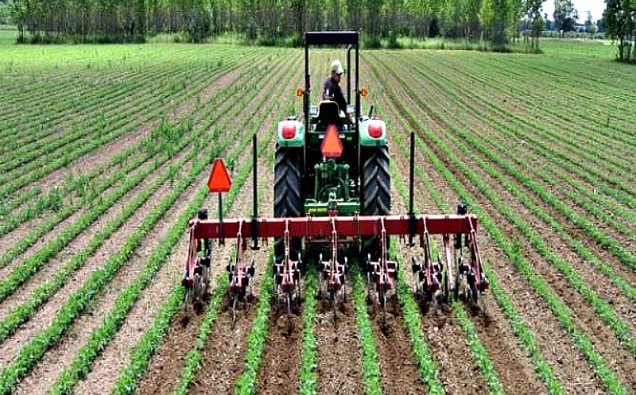
In Pakistan’s agricultural heartland, particularly between the central city of Lahore and Multan in the south, potato harvesting activity is picking up pace. In addition to mechanized digging of the earth to bring the potatoes out, thousands of agriculture workers are also earning daily wages by picking the crop after digging the soil with small hand-handled implements.
Like harvesting of other major crops including wheat and cotton, the potato crop is also of seasonal nature, providing livelihood to millions of people, mainly in Punjab, the biggest province of Pakistan that produces some 83 percent of the total crop. Agriculture is the mainstay of Pakistan’s economy and the country remains one of the biggest producers of staple diet.
This year, a bumper crop of 3.7 million tones of potatoes is expected while the total domestic demand has been estimated at 3 million. Besides, dealers have off-loaded 0.3 million tones of carryover stock of previous year in the wholesale market, hiking the surplus to one million tones.
Consequently, the yawning gap between the possible production and demand is going to depress the potato prices as the ex-farm price has already dropped to Rs 600 to 700 per 100 kilograms, leaving the growers with little margins. Growers believe that it is the faulty policies of the government that have turned potato-growing into a non-profitable activity. Unlike the neighboring South Asian countries, there is no subsidy on electricity tariff on the agriculture water tube wells, they say.
However, this is not first time, the growers of potatoes in Pakistan will burn their fingers due to losses in this daily use crop. Experts say be it bumper crop or poor harvest, the loser are farmers, due mainly to a flawed agricultural marketing mechanism.
In the year 2014, the prices of potatoes touched the historical level of Rs 80 per kg due to poor harvest in Punjab , mainly due to unfavorable weather conditions. The beneficiary of this hike was the so-called middle man (hoarders and dealers), neither consumers nor growers. Even in current glut season, the price of potato in the urban centers of Pakistan like Lahore, ranges from Rs 20 to 30, almost 4 times the ex-field price.
When sold in the form of French fries and chips, the value addition increases the price of potato by 250 times. In the absence of state-owned procurement agency, the middle man has started purchasing the potato at prices as low as Rs 600 per 100 kg (quintel) and transferred the produce to cold storages. The quantity placed at the cold storages will be off-loaded in the open market at exorbitant prices. Again the beneficiary would be the middle man or investor.
The government can help by purchasing half a million tones of produce to end the glut and sell the vegetable whenever the prices get stable. For this purpose, federal procurement agency, PASSCO and provincial food departments may be utilized to bring solace to the growers. Otherwise, analysts say if the farmers of the potato belt don’t get some relief, it may have severe implications for Pakistan’s federal government in political terms.
Meanwhile, a report in Pakistan Today newspaper says Islamabad has been advised to facilitate export of 500,000 tones potato to stabilize the domestic market, as the local market risks crashing due to supply of the stocked commodity just before the arrival of the new crop.
According to a Ministry of National Food Security and Research official the Ministry has recommended to the government to immediately take steps to export up to 500,000 tones of potato. The report says stockpilers plan to export the surplus to Sri Lanka, Turkey and Russia. The good news in this respect is that compared with the past, Pakistan now has a much large number of cold storage facilities, helped by rising exports of citrus that have expanded the storage capacity in the agricultural heartland.












